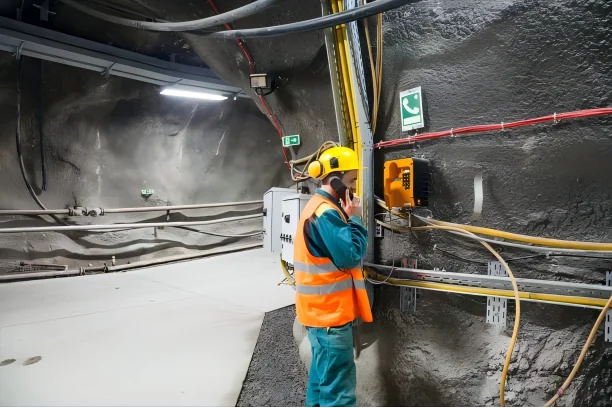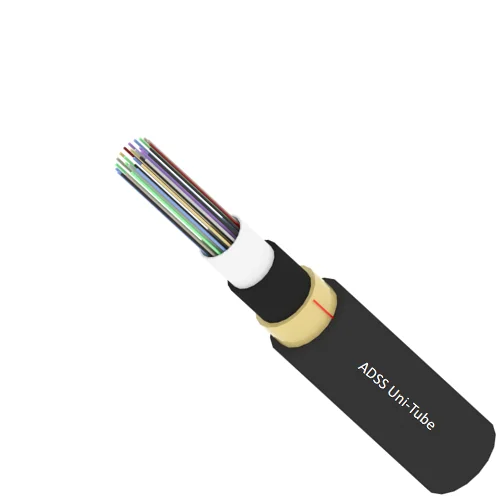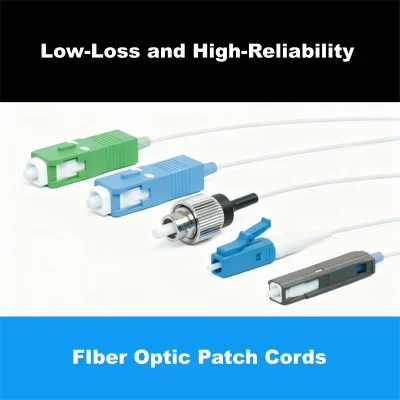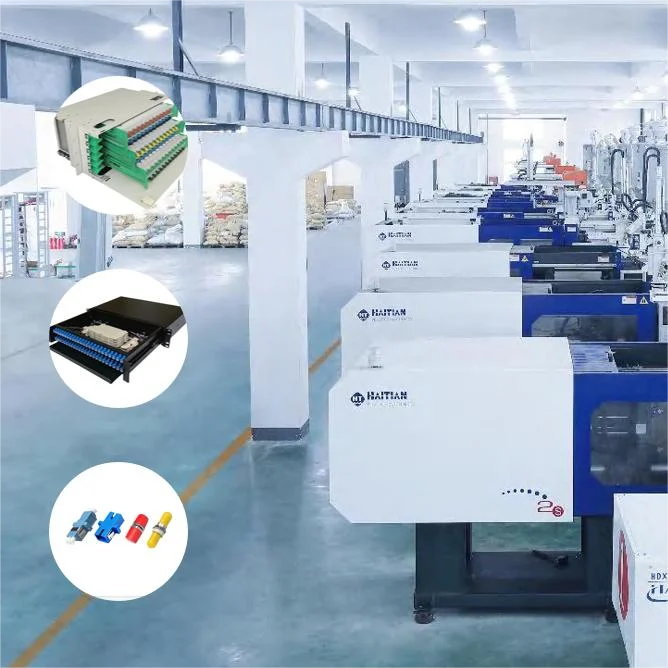Application
- Building A, Republic International Business Plaza, No. 3699 Gonghexin Road, Jing'an District, Shanghai
- +86-21-59175887
- market@soctfiber.com
- 86-17321363317
- 86-13341796231
Mining
How Are Fiber Optic Cables Revolutionizing Communication and Control in Mining Operations?
Are outdated communication systems hindering safety and productivity in your mine? Struggling with signal loss, equipment interference, or the sheer harshness of the underground environment? Fiber optics provide a resilient, high-capacity solution.
Fiber optic cables revolutionize mining by offering unparalleled immunity to electromagnetic interference from heavy machinery, robust structural resistance to harsh physical conditions (water, dust, vibration), and the high bandwidth needed for modern automation, real-time monitoring, and secure data transmission deep underground.

In my years at MoldAll, manufacturing advanced communication solutions, I’ve seen firsthand how critical robust and reliable data transmission is, especially in demanding sectors like mining. The extreme conditions – dust, moisture, vibration, and potential for explosive gases – require communication systems that are not just functional but incredibly resilient. It’s truly impressive how fiber optic technology, with its specialized construction, is becoming the nervous system of today’s smart mines.
Why Are Robust Fiber Optics Essential for Safe and Efficient Mine Communications?
Concerned about data corruption from powerful motors or communication failures in hazardous areas? Are your cables constantly battling dust, water, and physical stress deep underground? Fiber optics are built for these challenges.
Robust fiber optics are essential in mining because their dielectric nature prevents EMI from heavy equipment, and their specialized construction—including waterproofing, armoring, and high-temperature resistance—ensures reliable data flow for critical safety and control systems in harsh subterranean environments.

I’ve talked with many mining engineers who emphasize that the underground environment is one of the toughest places for any technology. Electrical noise from massive drills, loaders, and ventilation fans can wreak havoc on copper-based signals. Add to that the constant presence of dust, moisture, and the risk of physical damage, and you see why standard cables often fail. Our fiber optic solutions at MoldAll, designed with these mining-specific challenges in mind, offer inherent immunity to EMI and can be built with multiple protective layers. This ensures vital communications for safety systems, remote equipment control, and environmental monitoring remain uninterrupted.
Fortifying Mine Operations with Structurally Sound Cables
In mining, where safety and operational uptime are paramount, the integrity of communication links is non-negotiable. The design of fiber optic cables addresses these needs directly.
- Immunity to Electromagnetic Interference (EMI) and Radio Frequency Interference (RFI): Mines are filled with high-power electrical equipment – motors, variable frequency drives (VFDs), and sometimes even communication systems that can generate significant EMI. Fiber optic cables, being made of glass or plastic and transmitting light, are completely immune to this. This is crucial for the reliable operation of mine control systems and sensor networks.
- Intrinsic Safety in Gassy Mines: Fiber optics are dielectric, meaning they don’t carry electrical current. This eliminates the risk of sparks, making them intrinsically safe for use in mines with methane or coal dust, where even a small spark could be catastrophic.
- Structural Resistance to Harsh Conditions:
- Waterproofing: Many mine sections are wet or prone to flooding. Fiber optic cables for mining often feature gel-filled tubes, water-swellable tapes, and robust, impermeable outer jackets to prevent moisture ingress.
- Dust Resistance: Fine dust is pervasive in mines. Sealed connectors and durable jacketing protect the delicate fiber core.
- Vibration and Shock Resistance: Blasting operations and heavy machinery create constant vibrations. Cables are designed with materials and construction techniques (like tight buffering and strength members) that absorb and withstand these forces.
- Temperature Extremes: Deep mines can be very hot, while surface operations in some regions face extreme cold. Fiber optic cables can be specified with materials that maintain performance across a wide temperature range.
- Armored Layers: To protect against crushing by rockfalls or machinery, and even rodent damage, mining fiber optics often incorporate armored layers. This can be metallic (steel tape, interlocked armor) or non-metallic (aramid yarns, fiberglass) depending on the specific need for flexibility and protection.
Consider these crucial protective characteristics:
| Structural Feature | Copper Cables | Fiber Optic Cables (Mining Grade) | Significance in Mining Environment |
|---|---|---|---|
| EMI/RFI Immunity | Susceptible to interference from motors, VFDs. | Complete immunity (dielectric). | Reliable data for control systems, no interference. |
| Spark Risk | Potential spark hazard (conductive). | No spark risk (dielectric). | Essential for safety in gassy mines (methane, coal dust). |
| Waterproofing | Can degrade, short-circuit if breached. | Excellent with gel-fills, swellable tapes, robust jacketing. | Reliable operation in wet/damp conditions, preventing signal loss. |
| Armored Protection | Available, but often adds significant bulk. | Available (metallic/non-metallic), optimized for ruggedness. | Protects against crush, impact, abrasion in harsh underground conditions. |
| Chemical Resistance | Varies, some jacketing susceptible. | Can be specified with chemically resistant jacketing materials. | Longevity in environments with corrosive mine water or chemicals. |
The combination of EMI immunity and robust structural design makes fiber optics the superior choice for dependable communications in the unforgiving mining environment.
How Does Fiber Optic Bandwidth and SWaP Support Modern Mining Applications?
Are your current networks struggling with the data demands of mine automation, real-time monitoring, or extensive underground communication networks? Is the bulk and weight of traditional copper cabling complicating deployment in shafts and long drifts? Fiber optics deliver the capacity and convenience needed.
Fiber optic’s high bandwidth is crucial for data-intensive mining applications like autonomous vehicle control, extensive sensor networks, and real-time video, while its low Size, Weight, and Power (SWaP) simplifies installation of extensive underground communication networks and reduces load on mobile equipment.

At MoldAll, when we discuss solutions with mining industry clients, the conversation quickly turns to the need for more data and easier deployment. Modern mines are becoming increasingly sophisticated, relying on automation, Internet of Things (IoT) sensors, and comprehensive data analytics. These systems generate and consume vast amounts of data. Furthermore, routing cables through kilometers of tunnels, down shafts, or onto mobile machinery is a logistical challenge where the smaller size and lighter weight of fiber optics offer huge advantages for establishing extensive underground communication networks.
Powering the Smart Mine with High-Capacity, Efficient Cabling
The drive towards safer, more productive, and more sustainable mining operations is heavily reliant on advanced technology, which in turn relies on robust, high-bandwidth communications.
- Enabling Mine Automation and Remote Control: Autonomous haul trucks, remote-controlled rock drills, and automated longwall mining systems require constant, low-latency, high-bandwidth communication for safe and efficient operation. Fiber optics provide the backbone for these mine automation systems.
- Supporting Comprehensive Real-time Monitoring:
- Environmental Monitoring: Networks of sensors for gas detection (methane, CO), air quality, seismic activity, and ventilation control.
- Equipment Health Monitoring: Predictive maintenance through real-time data from sensors on critical machinery.
- Personnel Tracking and Safety Systems: Locating miners and equipment underground for safety and operational efficiency.
- High-Definition Video Surveillance: Essential for security, monitoring hazardous areas, and providing remote operational oversight.
- High-Speed Data Networks: Connecting all parts of the mine – from the face to the surface processing plant and central control rooms – into a unified underground communication network. This includes supporting leaky feeder communication systems by providing a high-capacity backbone.
- Geotechnical Monitoring: Fiber optic sensors can be embedded in rock structures to monitor strain, temperature, and seismic shifts, providing early warnings of instability.
The advantages for specific mining applications are clear:
| Mining Application | Data Demand | Key Fiber Optic Benefit | Impact |
|---|---|---|---|
| Mine Automation (AGVs, Drills) | Very High | High bandwidth, low latency, EMI immunity | Increased productivity, safety, reduced operational costs. |
| Real-time Environmental Sensing | Moderate | Reliability in harsh conditions, long distance transmission | Enhanced worker safety, regulatory compliance. |
| Video Surveillance (CCTV) | High | High bandwidth for multiple HD streams | Improved security, operational oversight, incident investigation. |
| Underground Communication Networks | High | SWaP (easy install), bandwidth, distance | Comprehensive connectivity for voice, data, control systems. |
| Leaky Feeder System Backbones | Moderate | EMI immunity, distance, reliability for connecting RF emitters | Clear and reliable radio communication throughout underground workings. |
| Control Systems (Conveyors, Pumps) | Low-Mod | EMI immunity, reliability, intrinsic safety | Uninterrupted operation of critical mine infrastructure. |
Fiber optics are not just cables; they are enablers of the next generation of smart, safe, and efficient mining.
Conclusion
Fiber optic cables, with their inherent EMI immunity, robust structural protections like waterproofing and armoring, and massive bandwidth, are transforming mining operations, ensuring reliable communication for safety, automation, and efficiency deep underground.
Related Products
No results found.




